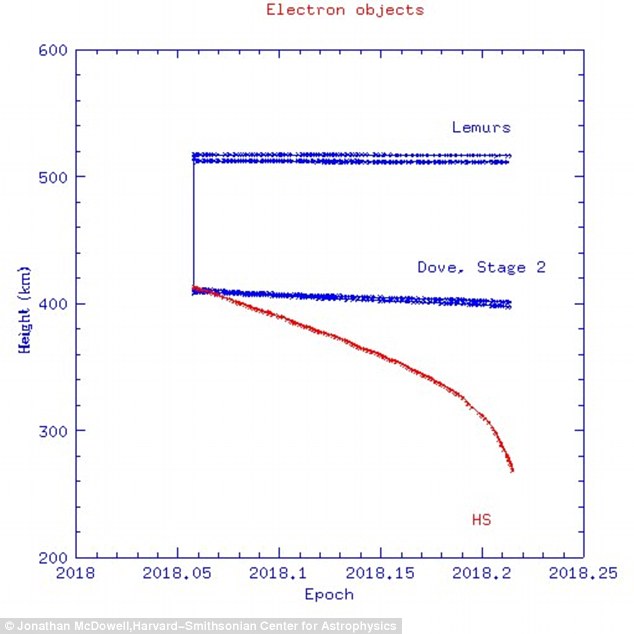Sunset "Stars of Humanity"
Launched in January as a surprise and for inspiration of mankind, the passive reflector of the Humanity Star (“Star of Mankind”) recently burned out in the atmosphere. It turned out to be too light for its area and was launched into a too low orbit to hold out in space for more than a few weeks.

Humanity Star, photo Rocket Lab

Launch PH Electron, photo Rocket Lab
On January 21, the second launch of the ultra-light Electron booster gave a pleasant surprise - on board, besides the regular payload - one Dove satellite and two Lemur-2 developers of the rocket secretly submerged the geodetic sphere of 76 faces, about 1 meter in diameter and weighing 10.3 kg. The satellite was named the Humanity Star ("Star of Humanity"), and, according to the creators, it was supposed to be "a vivid symbol and a reminder to everyone on Earth of the fragility of our home in the Universe."
')
It is curious that the launch caused not only a positive reaction - there were astronomers who compared the satellite with space graffiti, vandalism in the night sky and brilliant space junk. However, both joy and indignation were not destined to last long. Rocket Lab made a mistake with the estimate of the time the satellite was in orbit - it began to decline so actively that it would obviously not have lasted for nine months in space.

Second-stage orbit altitude and launch satellites January 21, Jonathan McDowell diagram
As a result, the Humanity Star burned down in the atmosphere on March 22 in the evening in Moscow, leaving behind only cadres of observations of enthusiasts around the world.

Photo of Kieran Fanning, New Zealand
A farewell message from the head of Rocket Lab Peter Beck appeared on the official website , which, in particular, says:
Rocket Lab does not plan to launch a similar satellite again, but if you want to look at man-made objects in the sky, they are enough. For at least another few years, the ISS will fly until the Iridium flashes have ended. To search for objects flying in the field of visibility where you are, I recommend the site and the Android-application Heavens-Above.

Humanity Star, photo Rocket Lab

Launch PH Electron, photo Rocket Lab
On January 21, the second launch of the ultra-light Electron booster gave a pleasant surprise - on board, besides the regular payload - one Dove satellite and two Lemur-2 developers of the rocket secretly submerged the geodetic sphere of 76 faces, about 1 meter in diameter and weighing 10.3 kg. The satellite was named the Humanity Star ("Star of Humanity"), and, according to the creators, it was supposed to be "a vivid symbol and a reminder to everyone on Earth of the fragility of our home in the Universe."
')
It is curious that the launch caused not only a positive reaction - there were astronomers who compared the satellite with space graffiti, vandalism in the night sky and brilliant space junk. However, both joy and indignation were not destined to last long. Rocket Lab made a mistake with the estimate of the time the satellite was in orbit - it began to decline so actively that it would obviously not have lasted for nine months in space.

Second-stage orbit altitude and launch satellites January 21, Jonathan McDowell diagram
As a result, the Humanity Star burned down in the atmosphere on March 22 in the evening in Moscow, leaving behind only cadres of observations of enthusiasts around the world.

Photo of Kieran Fanning, New Zealand
A farewell message from the head of Rocket Lab Peter Beck appeared on the official website , which, in particular, says:
Let the “Star of Humanity” be a brief moment in human history, I hope that the conversations and ideas that it has lit throughout the world will develop further. And these conversations will play a role in how we will manage our planet together and respond to the challenges facing us all.
Rocket Lab does not plan to launch a similar satellite again, but if you want to look at man-made objects in the sky, they are enough. For at least another few years, the ISS will fly until the Iridium flashes have ended. To search for objects flying in the field of visibility where you are, I recommend the site and the Android-application Heavens-Above.
Source: https://habr.com/ru/post/411083/
All Articles